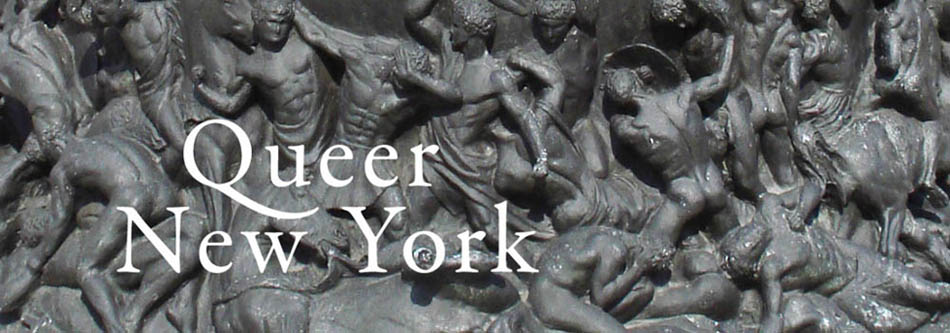 Yesterday, Mark, Hanif, and I went to the Schomburg Center for Research in Black Culture in Harlem to check out Soulful Stitching, an exhibition of patchwork quilts made by women of African heritage who live in southern India.
Yesterday, Mark, Hanif, and I went to the Schomburg Center for Research in Black Culture in Harlem to check out Soulful Stitching, an exhibition of patchwork quilts made by women of African heritage who live in southern India.The women are part of a group of people known as the Siddis. They're descended both from early (1st millenium CE and circa the 12th century) African immigrants who traveled from the Horn of Africa to the Arabian Peninsula and parts of South Asia and from slaves who were taken by the Portuguese to Goa in western India.* The earlier settlers took jobs as merchants, soldiers, sailors, and administrators, and some achieved power as leaders in government, religious groups, and the military. The slaves moved south after escaping from their bondage, and their descendants were joined at various times by offspring of the earlier settlers. Today, about 20,000 Siddis live in a remote area of thick forests and high plains in the Western Ghats mountains.
The quilts are called kawandi and are made from old clothing of family members, so the colors and patterns vary greatly. The women use one or more pieces of sari fabric as backing material, and the finishing touches on every quilt are small bundles of square fabric that have been folded into triangles and sewn on the corners.
Henry Drewal, the curator of the exhibit and a professor of art history and Afro-American studies at the University of Wisconsin–Madison, helped set up the Siddi Women's Quilting Cooperative, which enables women from three Siddi communities to earn income from their craft that they collectively decide how to spend. There are many more kawandi to be found on Drewal's website, including some that are available for purchase.
I learned about the exhibit from a report on NY1. I had planned to go last Sunday, before I realized that the Schomburg Center is closed on Sundays because it's part of the New York Public Library system. I'm glad I ended up going later so that my crafty friend Mark and Mark's honey and my friend, Hanif, could join me.
Hanif was born and raised in Tanzania, but his family was from western India, near Pakistan. He said he had been unaware of—and was interested to learn of—the African people who had done essentially the reverse migration of his family. He may return to the center on Saturday, April 16, when Omar Ali, a professor of African American and Diaspora Studies at the University of North Carolina at Greensboro, will speak on "The Making of the African Diaspora in the Indian Ocean World."
Mark said that the women of his grandmother's generation were enthusiastic quilters, and the hobby is taking off among his generation. There's a store in his small hometown of Portland, North Dakota, that sells quilting supplies and allows customers to work on their quilts there as well.
While we were at the center, we also toured Harlem Views/Diasporan Visions: The New Harlem Renaissance Photographers, an exhibition of photos by the 25 members of TNHRP. The photographs document the cultural, political, and social lives of residents of Harlem. Among the most powerful images for me were those of people protesting the shooting death by police of Amadou Diallo, a 23-year-old immigrant from Guinea who was killed in a hail of 41 bullets a little over 12 years ago. All four plainclothes New York Police Department officers were acquitted on charges of second-degree murder and reckless endangerment.
I couldn't find the report I saw about the kawandi exhibit on NY1's website. Here's a report on the photo exhibit by NY1's Roger Clark.
Both exhibitions will be at the center through June 30, well beyond the end of Black History Month.
*All of the information in this post about the Siddis and their quilts is taken from explanatory text displayed as part of the exhibit. The photo came from the Schomburg Center's website.



Wow, what a unique exhibit. Thanks for sharing.
ReplyDelete-- Shantangela
Thanks for inviting Hanif and me! Mark
ReplyDelete